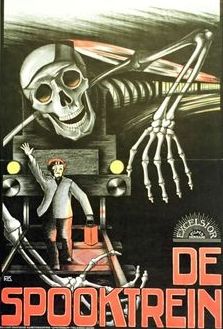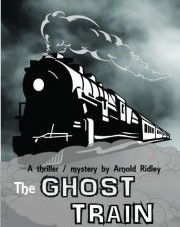


It’s back in the good old days when we still had slaves, because that was great. Scarlett O’Hara (Vivien Leigh) is an obnoxious, mentally-deficient, self-absorbed tourette-sufferer who we should love because she has a hot bod and is a bitch, which equals sexy. In their slave paradise, she’s surrounded by people like Melanie—who’s a Madonna, because due to the production code, no whores were allowed, so a woman could only be a Madonna or a bitch—and Ashley, who is too placid to actually be defined as a person. Then along comes Rhett Butler. He’s a bad boy. A very bad boy. If he went to high school in the 1950s, he’d be wearing a black leather jacket. Naturally the bitchy woman-child/head cheerleader wants a piece of that bad boy, even if he displays very little personality. But then a real problem crops up: the Civil War. That war is going to take away those happy, happy slaves and screw up our woman-child’s obsession with dirt. You know, thousands upon thousands of people are dying, but this rich girl might not be able to live like a princess any more so, you know, priorities. She wins her bad boy, and then half the film happens, but no one cares about any of that till the last line.
As a review, there’s not a lot of point in looking at the most popular film ever made. You’ve undoubtedly already seen it. Everyone has. It is a trash fire of low-rent melodrama and is morally repugnant, but it is popular. But as I’m working through The Foscars (fixing the Oscars), I need to talk about it. So here goes.
Gone With the Wind is two tales twisted together. It is a high school melodrama about the mean girl and her obsession with the bad boy, and it is an eulogy for the Old-South, bathing in how great it was when White people had slaves and the upper classes were properly lording over the little people. Let me put a pin on the Lost Cause celebration and look at the melodrama.
“Melodrama” is not a neutral expression. It’s a negative one. It describes drama where clichés rule, emotions are pumped up to eleven, acting is false, and everything is sensationalized beyond what is natural or fitting for the material. As it is removed from actual human behavior, melodrama rarely has anything to say about its characters. Melodramas can be fun, like rollercoasters—not something you heap accolades upon as important achievements. Its modern cousins are not indie dramas, but TV soap operas. “Next Week, on Gone With the Wind, Scarlett causes a scandal at the ball while Ashley dashes her hopes by turning to her cousin.” Subtle is not a term for Gone With the Wind. Cinematic super heroes are more restrained. They are also more realistic and human. The plot is so overblown, so ridiculous, and so never-ending (my god is it long—easily an hour should be cut) that I’d laugh if it didn’t tire me out. The entire second half is just tragedies heaped on these terrible people for the sake of heaping tragedies on them.
But a pitiful plot can be overcome if everything else works. Which leads to the dialog. Ignoring the final line—which is memorable—it is terrible. Forget Rhett as he doesn’t get to say much and when he does it is “bad boy” speech. Scarlett rules the film and her lines are painful. Try them. Recite them yourself. But they escape the derision they deserve due to one of the things the film did right: Vivien Leigh. No, she doesn’t act realistically—that wouldn’t work it this film. No, she doesn’t pull off sounding human. But she does make it all less silly. She has the skill of saying ridiculous things and making them sound less ridiculous. Her easy control of sexuality helps. If you make every line sexy, people will dwell more on the cherry red lips than the words coming out of them.
The rest of the cast doesn’t work as well. Clark Gable was never much of an actor, but that’s OK as he isn’t asked to do much here. He just has to stand and squint a bit and play the bad boy. Any actor with the physical stature could pull it off. Poor Olivia de Havilland comes off much worse, but then she has nothing to work with. She’s stuck with the role of a plaster saint. I guess that beats offensive racial stereotype, which is Butterfly McQueen’s part. But she ends up less embarrassing than Leslie Howard. Even die hard defenders of this atrocity back down on Howard. Has an actor ever been so poorly cast? He excelled as the slightly smarmy, elitist intellectual. His Henry Higgins in 1938’s Pygmalion puts all later attempts to shame and raises that film over My Fair Lady, even without the songs. His wandering poet in The Petrified Forest is nearly as good. But simpering hero wasn’t in his bag. He just looks uncomfortable, and I don’t mean Ashley; I mean Howard. It is a monumentally bad performance that would sink a better film.
I’ve heard the idea that the Oscar is for the production (the original title of the award was “Outstanding Production” and the producer is the recipient), not the film, so Gone With the Wind earns its awards. Sure, the movie stinks, but the production was outstanding. Like a CEO of a tech firm, David O. Selznick created a huge project and oversaw a million parts and pieces. He pulled together an army of workers and assigned them their tasks. He empowered the best costumers (I’ve no problem with that nomination) and set designers and builders. He organized a city. And he brought in a ton of money and knew where to spend it. He signed up Max Steiner for the score. I’m not the fan of the theme music that some are, but it isn’t bad. Well, it isn’t bad if you occasionally turn it down, but Gone With the Wind functions on the idea that no moment can’t be enhanced by bombastic, overbearing music. And Selznick was all about bombast. That’s what he wanted. He wanted a sick, stupid romance and a glorification of the slave-filled South and he wanted it with fireworks and he got exactly what he wanted. Yeah, the film is terrible, but the production of it is impressive.


Now, back to the foundational message—the Lost Cause. No American film besides Birth of a Nation has done more harm than Gone With the Wind. A proportion of oppression, lynchings, and the still too visible racial divide in the US can be traced to Gone With the Wind. Books and scholarly revisionism have their power, but to really get the populous on board you need pop art, and that means a movie, and that means Gone With the Wind.
The Lost Cause was (and unfortunately still is) a movement focused on excusing and ignoring any wrongs done by the South before and during the Civil War. It takes on a false narrative of noble knight-type Confederate soldiers, fighting for honor, justice, and the Southern way of life. Their cause was impossible due purely to the greater financial power of the North, but they took up the sword anyway, destined to lose, because it was the honorable thing to do. This view paints the antebellum South as a near paradise, with all the rich White men as perfect gentlemen and rich White woman as beautiful belles. In this view, slavery was barely a thing at all, and to the degree that slaves lacked freedom, it was all to the good as it helped them to move from their savage natures. In the Lost Cause fantasy, slaves were all happy and slave owners were benevolent. Those supporting this view simply ignore earlier writings and even the secession documents so as to make the Civil War completely unrelated to slavery. The Lost Cause created mythic character-types and was used to justify the actions of Southerners and as a way to more easily integrate back into the United States after the war. Of course to do that, Blacks had to be left out in the cold. The Lost Cause makes apologies unnecessary and eliminates any responsibility for the freed slaves. What’s more, since slavery was good for them, it allowed Whites to view Blacks as the wild beasts that they had, in good conscience, held back from their inborn flaws. And thus, any hope of equality of treatment was dashed. The country has yet to recover.
And Gone With the Wind is seeped in the Lost Cause. A majority of the characters come straight from the playbook. Noble gray knight? Check. Happy slaves? Check. Evil Northerners out to destroy the pure way of life? Check. Glowing Southern Belles? Check. Gone With the Wind presents Eden, with everything terrible that happens due to not letting the South and its proper way of life (and slaves) alone. It doesn’t record how the South actually was, but celebrates a fantasy vision of a time best left in the past. It glorifies a sad time, and ignorant people, and immoral philosophies.
I can’t claim Gone With the Wind is a terrible film due to its terrible message. I can condemn it, but that’s a different matter. In fact, I’m forced to give it points. Like Triumph of the Will that made millions cheer for Nazis, Gone With the Wind is effective in communicating its toxic message, and that effectiveness must be given its due. A worse film would have failed to make its point. Unfortunately, this film didn’t fail.
So what we have is a beautifully produced and skillfully constructed malevolent swamp, upon which is sitting a silly, overwrought and yet at times terribly slow, and unduly long melodrama where simple and unpleasant cutout characters recite ridiculous lines that mean very little.












